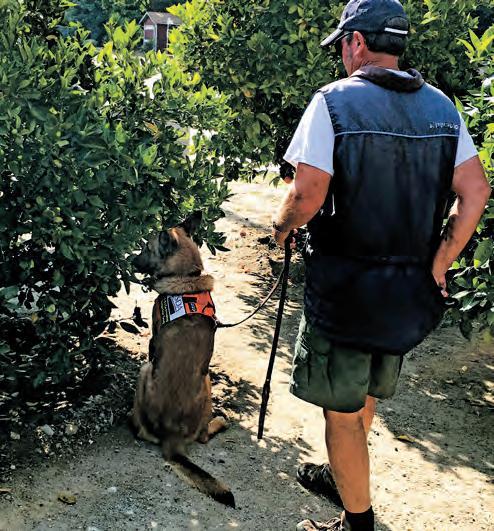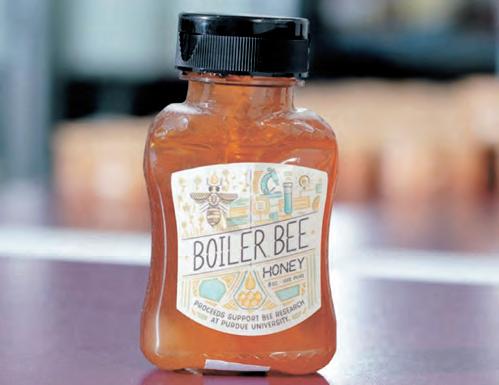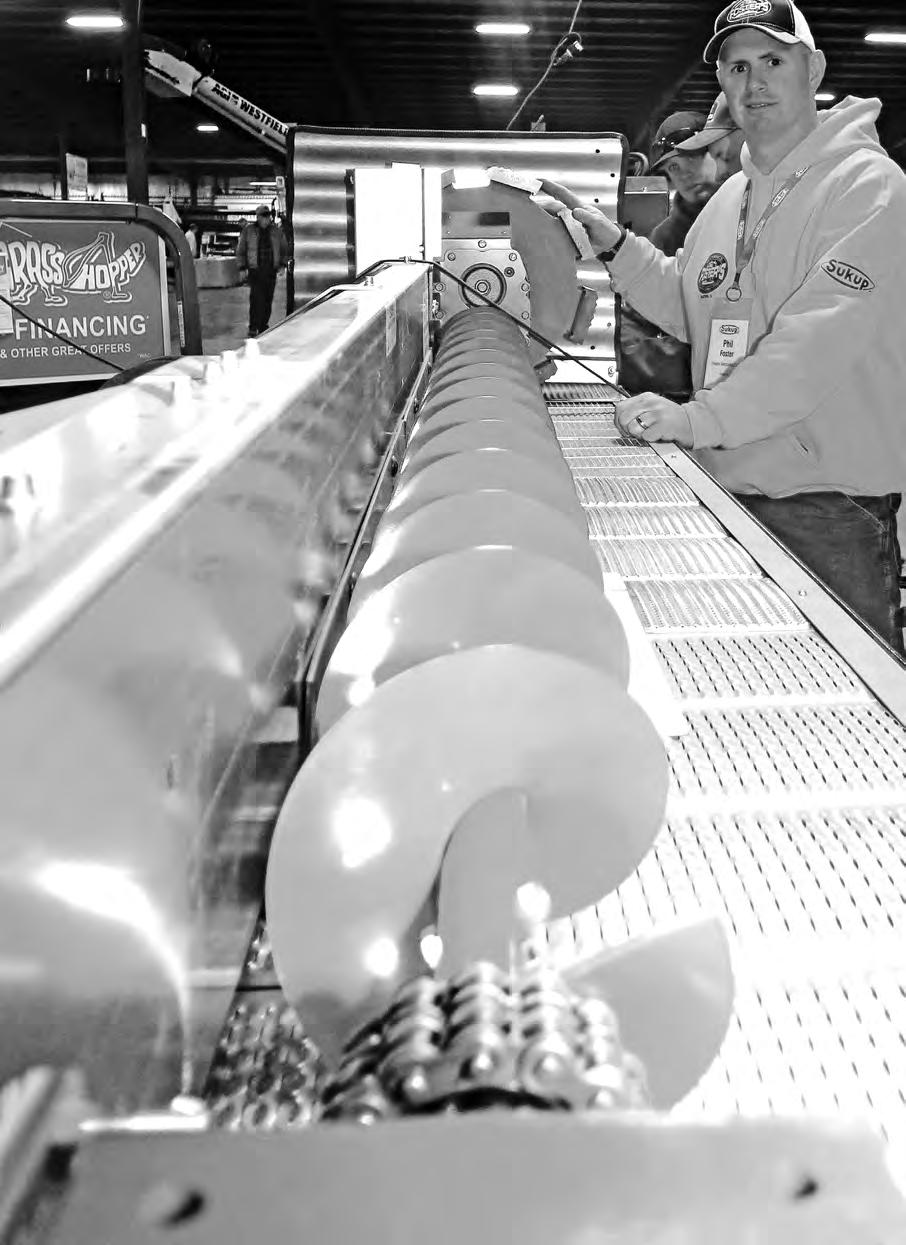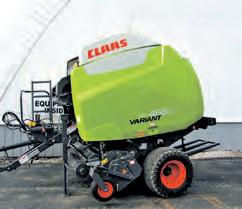
7 minute read
8th Day Distillery
GIFFORD, Ill. — Hope that the trade agreements announced in January would bolster the anemic commodity market were quickly quelled, leaving trade-watchers scratching their heads.
President Donald Trump and Chinese Vice Premier Liu He signed Phase 1 of a U.S.-China trade agreement Jan. 15. One day later, the U.S. Senate followed the House’s suit and approved the new U.S.-MexicoCanada Agreement. Trump signed USMCA into law Jan. 29, and the agreement is now up to Canada for ratification. Curt Kimmel, Bates Commodities owner and commodity broker, ana lyzed the market’s blasé reaction in an interview at the firm’s Midwest Ag Expo booth Jan. 29.
Does the lackadaisical move by the markets after the trade announcements indicate the market already factored those agreements in or is there more to it?
“China has been going on for a year and a half. The trade was worn out. We did see the soy bean market rally 60 to 70 cents ahead of that signing, so there is some thought that maybe we bought the rumor and now we sold the fact.
“The thing is with this Phase 1 signing is it’s rotten timing from the standpoint that most of the boats are going to the southern hemisphere right now to ship the South American soybeans. We did see some sales prior to that Phase 1 signing. That was just to give them cushion until this South American crop came on line.
“If we’re going to get a positive from Phase 1, I think it’s going to be later on in June and July when they start booking new crop and shift those boats from the Southern Hemisphere to the Northern Hemisphere. “Also, South America has favorable weather. They have some dry spots and so forth, but the weather is favorable. So, to get bullish news in soybeans we need to see a port strike, dock strike, truck strike or something to get the trade excited.
“The key is Canada and Mexico. Mexico is a huge buyer of corn and pork. We just need to get all of the countries to agree on (USMCA) because if we don’t see a general agreement there that could be another thorn in the side as we move forward.” Kimmel
Is the market to the point now where there has to be actual sales in the books before there is positive price movement after many months of talk?
“Yes, there are loopholes in the Phase 1 contract with China. You can back out in 60 days. There’s a 30-day window before anything happens. They’re not going to say they’re going to buy soybeans on such a date.”
China has been hit hard with the Africa swine fever with millions of pigs being culled, according to reports. What impact does that have on the U.S. hog market?
“Reports are that China lost 40% of its hog herd. So, they’ve gone through the world market and there’s a lot of enthusiasm, a lot of excitement about coming to the U.S. “So far, they’ve bought minimal from the U.S. They do have a company called WH Group that bought Smithfield Foods (based in Smithfield, Virginia) in 2013. So, they have that source if they need it.
“The thing about it is it’s bullish long-term from the standpoint that they’ll start replenishing those gilts and sows, so we’ll see a breeding herd go there. They bought a lot of Danish hogs.
“But with this flu in the
Nominations sought for World Food Prize
DES MOINES, Iowa — The World Food Prize Foundation is currently accepting nominations for the internationally re nowned World Food Prize that recognizes the accom plishments of individuals who have worked to im prove the quality, quantity or availability of food in the world.
“The World Food Prize Foundation annually seeks to elevate the work of leaders in agriculture and food systems to feed the world in a sustainable and nutritious manner,” said Barbara Stinson, president of the World Food Prize Foundation. “We must honor accomplishments and progress, and inspire further action, particularly by women-led initiatives and young leaders.”
Nominations of worthy candidates are invited from public and private organizations, academic institutions, governmental organizations and busi nesses.
Nomination criteria, the selection procedure and other information can be found at www.world foodprize.org/nominate. Nominations will be ac
Indiana AgriNews is published weekly for $30 per year by AgriNews Publications, 420 Second St., La Salle, Ill. Periodicals postage is paid at La Salle, IL 61301. Postmaster: Send address changes to Indiana AgriNews, 420 Second St., La Salle, IL 61301. Copyright 2020, AgriNews Publications, Illinois AgriNews and Indiana AgriNews agricultural weekly newspapers. No part of these publications may be reproduced in any form or by any means, mechanical, photocopying, or otherwise, without the express written permission of AgriNews Publications. AGRINEWS INDIANA EDITION USPS694-470 ISSN0745-7103 Serving Farm Families Throughout Indiana
cepted through May 1.
In 2019, the World Food Prize was awarded to Simon Groot of the Netherlands. Groot is the founder of East-West Seed, a company whose impact has spread over many countries, impacting millions of smallholder farmers.
Groot’s efforts resulted in enhanced vegetable production, benefiting millions of consumers and allowing for access to healthy, nutritious diets.
“You have to share your knowledge if you want to make the world better,” Groot said.
In its 33-year history, this reputable $250,000 award has been presented to 49 high-achieving individuals from 19 countries. Founded by Norman Borlaug in 1986, the World Food Prize is the highest honor that an individual can receive in terms of exceptional achievements in improving the quality, quantity and availability of the world’s food supply and access to it.
The 2020 award will be presented in October at the World Food Prize Laureate Award Ceremony in Des Moines.
hogs and the flu with the people, the concern now is that we’re not seeing people go out to eat or travel in China, so meat consumption could be put on hold. “The other thing is I think they shutdown the wild animal market and so hopefully they’ll come and buy traditional pork and beef versus wild animals.”
A comment was once made by another commodity trader that a tweet can now move the market 25 cents one way or the other.
“Never has a president gone public as much as he has. It’s kind of interesting that people weigh on that. And part of that is we’ve got so many computers trading the market now and they’ll read the headline or read Twitter and see it and react not knowing what the consequences are.” “It’s come to light over the years that we’re losing market share of the world and that’s a concern. You want to keep that market share. There are the different seasons and we have to use those different seasonals to our advantage that we know they’re going to be buying and we have to take advantage of that purchasing power to sell when that happens. “We can’t wait around for some more opportunities down the road because it’s just like clockwork. Those shippers are going to have the boats in the northern hemisphere to capture our fall harvest and then they’re going to move those boats to the southern hemisphere to capture that market. “The only way we’re going to get real market-sensitive is if we have an extreme problem in either the northern or southern hemisphere to kind of break that up.”
Tom C. Doran can be reached at 815-780-7894 or tdoran@agrinews-pubs. com. Follow him on Twitter at: @AgNews_Doran.









INNOVATION: IN THE PLANTER BOX. Why use instead of talc or graphite? This new innovative patent pending seed lubricant: Replaces talc and graphite for seed lubrication and meter performance 100% Soybean Product - Use what you Grow! Cleaner option than what you currently use Easy to use
Brazil is projected for a record soybean crop of 123 million metric tons, breaking the previous high mark by one million tons. Historically, South American soybeans flood the global market once their crops are harvested earlier in the year and it shifts to U.S. soybeans later in the year after our harvest. How does that all play into U.S. and the global market?





Call your dealer today to order! Or Call 844-GET-DUST ext. 702











